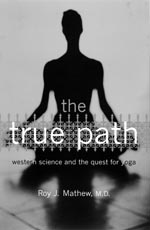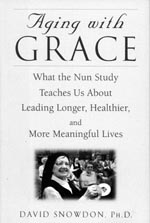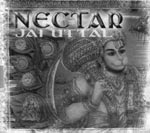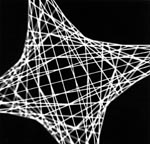The True Path: Western Science & the Quest for Yoga
Roy J. Mathew, MD
Perseus 2001
 Roy Mathew, a neuroscientist at Duke University Medical Center, is a Syrian Christian from South India,
though he tells us in his introduction to The True Path that the innocent beliefs of his childhood succumbed
soon after the start of his rigorous scientific training. He describes his childhood home as a place where
religion and philosophy comfortably co-existed. His mother regularly turned to her dreams and prayer for
guidance, while his father's bookshelves sagged under the weight of India's great philosophers and sages.
This open, eclectic environment gave Mathew room to explore what he wanted to do in life and he chose
neuroscience, the study of the human brain. For many years, scientific research satisfied him completely.
But then life intervened and compelled him to look deeper.
Roy Mathew, a neuroscientist at Duke University Medical Center, is a Syrian Christian from South India,
though he tells us in his introduction to The True Path that the innocent beliefs of his childhood succumbed
soon after the start of his rigorous scientific training. He describes his childhood home as a place where
religion and philosophy comfortably co-existed. His mother regularly turned to her dreams and prayer for
guidance, while his father's bookshelves sagged under the weight of India's great philosophers and sages.
This open, eclectic environment gave Mathew room to explore what he wanted to do in life and he chose
neuroscience, the study of the human brain. For many years, scientific research satisfied him completely.
But then life intervened and compelled him to look deeper.
Shortly after starting a new job in the psychology department
of Duke University, Mathew's mother died. Nowhere in his extensive
academic training could Mathew find a useful response to this
deep, personal loss. And yet his mother had been totally prepared.
She had dreamed of her death weeks before it actually came. Several
years earlier, his mother had told him that she was not afraid
of dying. She meant to be reassuring to a son who was about to
leave home for the first time, but the quiet strength of her knowing
shook the foundations of his logic and reason. The other factor
influencing Mathew's decision to study spiritual experience was
the alcohol- and drug-addicted study group assigned to his care.
He began to notice that the majority of those addicts who recovered
attributed their victory to some form of primary spiritual experience.
Although no two experiences were the same, there was no doubt
that they had been powerful enough and "real" enough to turn the
addiction around. Mathew had no scientific basis for evaluating
these so-called conversion experiences. His dedication to strict
scientific methodology gave way to a renewed interest in the phenomenon
of spiritual experiences and he naturally turned to the religious
traditions of his homeland. As he made his way along the converging
paths of modern science and ancient spiritual teachings, including
yoga, Mathew concluded that both contribute substantially to what
we know about ourselves. "Both are equally important," he writes,
"but a great gulf has separated them." The True Path makes a substantial
contribution toward closing the gap. Mathew starts with the observation
that what modern physics tells us about the stuff of our universe-that
matter is nothing more than ever changing forms of energy, that
time and space are ever fluctuating rates of vibration-has been
known by yogis and sages for thousands of years. He builds on
this observation with extensive references to the teachings of
the Buddha, the Upanishads, the ancient Vedas and yoga. Yoga,
he says, is the unifying field that brings mind, body and spirit
together. In some respects, The True Path is an ambitious book.
The subject is large and sometimes becomes a little unwieldy as
Mathew works to synthesize the stuff of life itself-mind and its
myriad dimensions, consciousness, God, and our purpose for being
here. These are prickly fields for a scientist to explore, yet
Mathew is willing and proves himself most capable. There is more
to the book than one reading allows. Be prepared to give The True
Path the time and consideration it deserves.
by Swami Gopalananda
back to top
Aging with Grace: What the Nun Study Teaches Us About Leading Longer, Healthier and More Meaningful Lives
David Snowdon, Ph.D.
Bantam Books 2001
 David Snowdon, an epidemiologist from the University of Minnesota, knew that
asking the nuns to donate their brains, upon death, would be a
difficult subject to approach. The silence after his presentation
left him wondering what their response would be. The nuns had
a difficult decision to make. But guided by intense thought and
prayer, over 700 of the nuns of the School Sisters of Notre Dame
agreed to donate their brains to the study of Alzheimer's disease.
Snowdon was pleasantly surprised. One nun said, "Well, of course
he can have my brain. What good is it to me when I am six feet
under?"
David Snowdon, an epidemiologist from the University of Minnesota, knew that
asking the nuns to donate their brains, upon death, would be a
difficult subject to approach. The silence after his presentation
left him wondering what their response would be. The nuns had
a difficult decision to make. But guided by intense thought and
prayer, over 700 of the nuns of the School Sisters of Notre Dame
agreed to donate their brains to the study of Alzheimer's disease.
Snowdon was pleasantly surprised. One nun said, "Well, of course
he can have my brain. What good is it to me when I am six feet
under?"
Aging with Grace documents Snowdon's study and his findings, which
are very helpful and hopeful. Alzheimer's is a disease that destroys
brain tissue and affects more than a third of the people who reach
the age of eighty-five. Yet the study shows that the debilitating
symptoms of Alzheimer's are avoidable. He found that a number
of the nuns had advanced Alzheimer's disease, their brains riddled
with solid deposits of plaque and tangles of rope-like protein
structures, yet they tested as mentally normal until the day they
died. Some of these nuns lived to be one hundred.
The findings from the multi-disciplined scientific studies show what an amazing thing the brain is.
The research included microscopic examinations of brain tissue and thorough research into the archival
medical and personal records of the nuns. Through this research, new understandings of disease and how
to escape it have been formulated.
Many of the findings have an element of common sense. In order to stay healthy, they recommend that we
read, walk, eat wisely, think intensely, keep learning, balance our emotional responses, have a positive
attitude and reduce any risk of strokes, which tend to advance Alzheimer's. Living life fully and using
the brain fully seem to be good ways of keeping the brain healthy. The other obvious elements with the
nuns, although not scientifically tested, is the strength of their spirituality and the power of community.
Dr. Snowdon witnessed "the ever present network of support and love. The community not only stimulates
their minds, celebrates their accomplishments, and shares their aspirations, but also encourages their
silences, intimately understands their defeats and nurtures their bodies when they fail."
Aging with Grace is a scientific study, but it also beautifully documents the lives of the nuns, how
they live together, care for and support each other. As the study progressed into a long-term study of
Alzheimer's disease, Dr. Snowdon became one of the family. His relationship with the nuns is a very warm
part of the book, different from other scientific studies. Before the study could be approved, Sister
Carmen, the elected leader of the nuns, requested: "I want you to remember who these women are. They
are real people. Very dear to us. They are holy people, too. I don't want you to treat them as research
subjects...They will open up to you, but only if you give of yourself first."
And he did.
The nuns have given a great gift in contributing to research in Alzheimer's, and David Snowdon has
given us a book that is a treasure to read.
by Swami Radhananda
back to top
Nectar: Live Kirtan and Pagan Remixes
Jai Uttal
Etherean Music 2000
 Jai Uttal's Nectar features a selection of Kirtan chants done in the call and response style that originates
in India. Jai Uttal himself is from the West, and he uses an eclectic mix of Eastern instrumentation such as
harmonium, tabla and dholak to create a mixed world-pop fusion charged with devotion and bliss.
Nectar is a live recording performed without Jai's usual accompanying Pagan Love Orchestra, so it has a
different flavour to it, a flavour of aliveness that awakens all my five senses. (He's an excellent artist
to see live; I will always remember the magical atmosphere that he creates, encouraging spiritual seekers
and lovers of music to open their hearts and feel yoga through the practice of dancing and singing to Kirtan.)
The opening track is upbeat and I'm immediately called to stop what I'm doing and dance, letting go of
worldly affairs and daily matters. However, the second track doesn't have quite the same effect; I find
Jai's voice unsuitable and irritating for the style of Classical Indian chanting that he's doing.
Track three is a beautiful chant, but I have to say that I prefer the version that Lakshmi Shankar does
on his Footprint album.
Jai Uttal's Nectar features a selection of Kirtan chants done in the call and response style that originates
in India. Jai Uttal himself is from the West, and he uses an eclectic mix of Eastern instrumentation such as
harmonium, tabla and dholak to create a mixed world-pop fusion charged with devotion and bliss.
Nectar is a live recording performed without Jai's usual accompanying Pagan Love Orchestra, so it has a
different flavour to it, a flavour of aliveness that awakens all my five senses. (He's an excellent artist
to see live; I will always remember the magical atmosphere that he creates, encouraging spiritual seekers
and lovers of music to open their hearts and feel yoga through the practice of dancing and singing to Kirtan.)
The opening track is upbeat and I'm immediately called to stop what I'm doing and dance, letting go of
worldly affairs and daily matters. However, the second track doesn't have quite the same effect; I find
Jai's voice unsuitable and irritating for the style of Classical Indian chanting that he's doing.
Track three is a beautiful chant, but I have to say that I prefer the version that Lakshmi Shankar does
on his Footprint album.
On a more positive note, I love track four with its mysterious
sounds-which Jai recorded on his Walkman while walking through
the corridors of an ancient Indian temple-blended into his own
music. It gives an authentic bhakti feeling and reminds me of
my many visits to the Hari Krishna temple in NYC where devotees
of Krishna jump up and down in an ecstatic state calling out God's
name: "Hari Bol." Jai's voice is great for this and I'm once again
compelled to join in and let go. The rest of the CD continues
to take the listener in and out of a range of blissful and ecstatic
moods. It's not for the passive listener, so be prepared to be
woken up and join in.
A final mention about the booklet inside the cover: Jai provides a beautiful description and translation
of the chants along with an explanation of how this recording came about. One can feel his devotion and
sincerity in this, as well as in his music. I am deeply grateful that I have been exposed to Kirtan through
Jai Uttal. It helps me in my daily life to connect with God, in whatever form I choose in that moment.
I wish for others to experience this too and invite you to taste the Nectar.
by Usha Leason
back to top
Volume 3: Further in Time
Afro Celt Sound System
Real World Records 2001
 I think I was about fifteen when I caught a glimpse of Afro Celt Sound System on late-night television.
I heard about five seconds of the song "Whirl-Y-Reel" and knew I had to find their album.
I've followed them through three albums now and am currently very impressed by Further in Time,
agreeing with many that it's their best so far.
This is an emotional, powerful, brilliantly constructed record. The Afro
Celts have a trademark mix of traditional African and Celtic rhythms and melodies backed by a tight electronic
sound. They are capable of making you dance one minute and weep the next.
The main Afro Celt vocalist, Iarla Lionird, weaves his smooth, sincere vocals through several tracks with
the ease and lilt of traditional Irish sean nos (old-style) singing. I think his finest moment on this album
is "Persistence of Memory," an achingly beautiful track where the Afro Celts' rich instrumentation backs off
considerably to make room for his sensitive lyrics. Lionird's voice isn't overused, though. There are
many instrumental tracks, like the fiery "Colossus," an energetic dancing track full of hummingbird-speed
acoustic guitar, and "The Silken Whip," rich with uilleann pipes and flute harmonies, a little like running
through the woods at night.
I think I was about fifteen when I caught a glimpse of Afro Celt Sound System on late-night television.
I heard about five seconds of the song "Whirl-Y-Reel" and knew I had to find their album.
I've followed them through three albums now and am currently very impressed by Further in Time,
agreeing with many that it's their best so far.
This is an emotional, powerful, brilliantly constructed record. The Afro
Celts have a trademark mix of traditional African and Celtic rhythms and melodies backed by a tight electronic
sound. They are capable of making you dance one minute and weep the next.
The main Afro Celt vocalist, Iarla Lionird, weaves his smooth, sincere vocals through several tracks with
the ease and lilt of traditional Irish sean nos (old-style) singing. I think his finest moment on this album
is "Persistence of Memory," an achingly beautiful track where the Afro Celts' rich instrumentation backs off
considerably to make room for his sensitive lyrics. Lionird's voice isn't overused, though. There are
many instrumental tracks, like the fiery "Colossus," an energetic dancing track full of hummingbird-speed
acoustic guitar, and "The Silken Whip," rich with uilleann pipes and flute harmonies, a little like running
through the woods at night.
And, of course, something must be said about "When You're Falling,"
which features Peter Gabriel on vocals and keyboards. This is
a well-deserved spot for Gabriel; after all, it is his label,
Real World Records, that has been Afro Celt's home for their five
years of recording. "When You're Falling" is catchy and alive,
opening with a brilliant mandolin riff that lets you know you're
in for a fun ride. In comparison to their last two albums, their
style has remained true and consistent, but I find the music much
more mature and densely layered on Further in Time. This record
is accessible to people of all musical backgrounds and tastes.
There's enough fascinating things happening in every track to
make seventy minutes of thorough listening pass by in an instant.
Dancers will also love this album, as nearly every song makes you want to move. And even the couple of songs
that take the dramatic Celtic sound slightly too far do contain their own beauty.
Every time I play this disk, people want to know who this fantastic group is and where I found out about them.
There is definitely something about them that is like nothing else I've heard. I recommend a listen.
by Shara Stewart
back to top